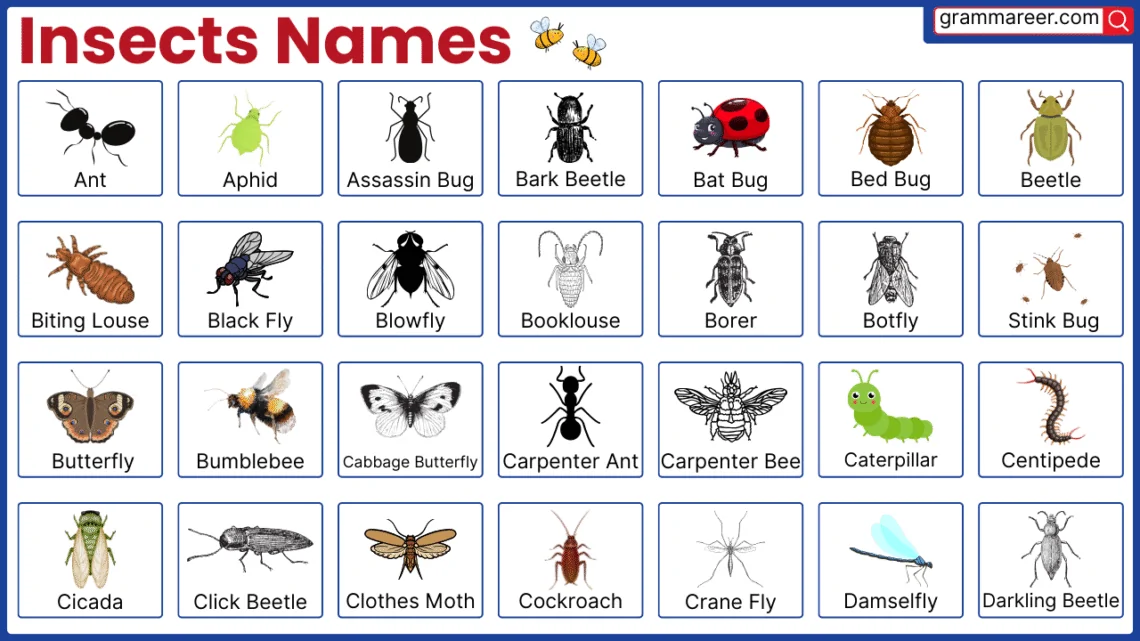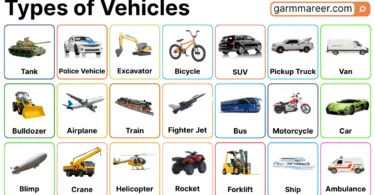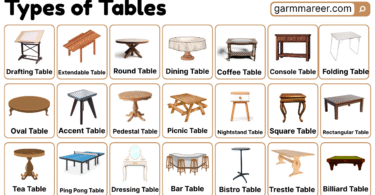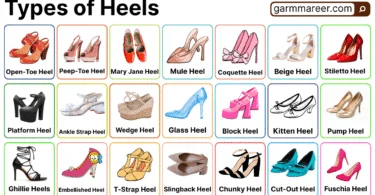Tiny insects with legs, wings, or antennae are found in soil, on plants, or inside homes. From mosquitoes to fireflies, insects names include hundreds of crawling and flying types. In this post, you’ll learn their names through lists and pictures for better recognition and communication.
Table of Contents
List of Insects Names in English
Some insects are seen almost everywhere. These are the ones people know the most by name. Below is a list of common insects names found in homes, gardens, and farms.
- Ant
- Fly
- Mosquito
- Butterfly
- Bee
- Beetle
- Wasp
- Grasshopper
- Dragonfly
- Cockroach
- Moth
- Termite
- Cricket
- Flea
- Lice
- Firefly
- Silverfish
- Ladybug
- Gnat
- Weevil
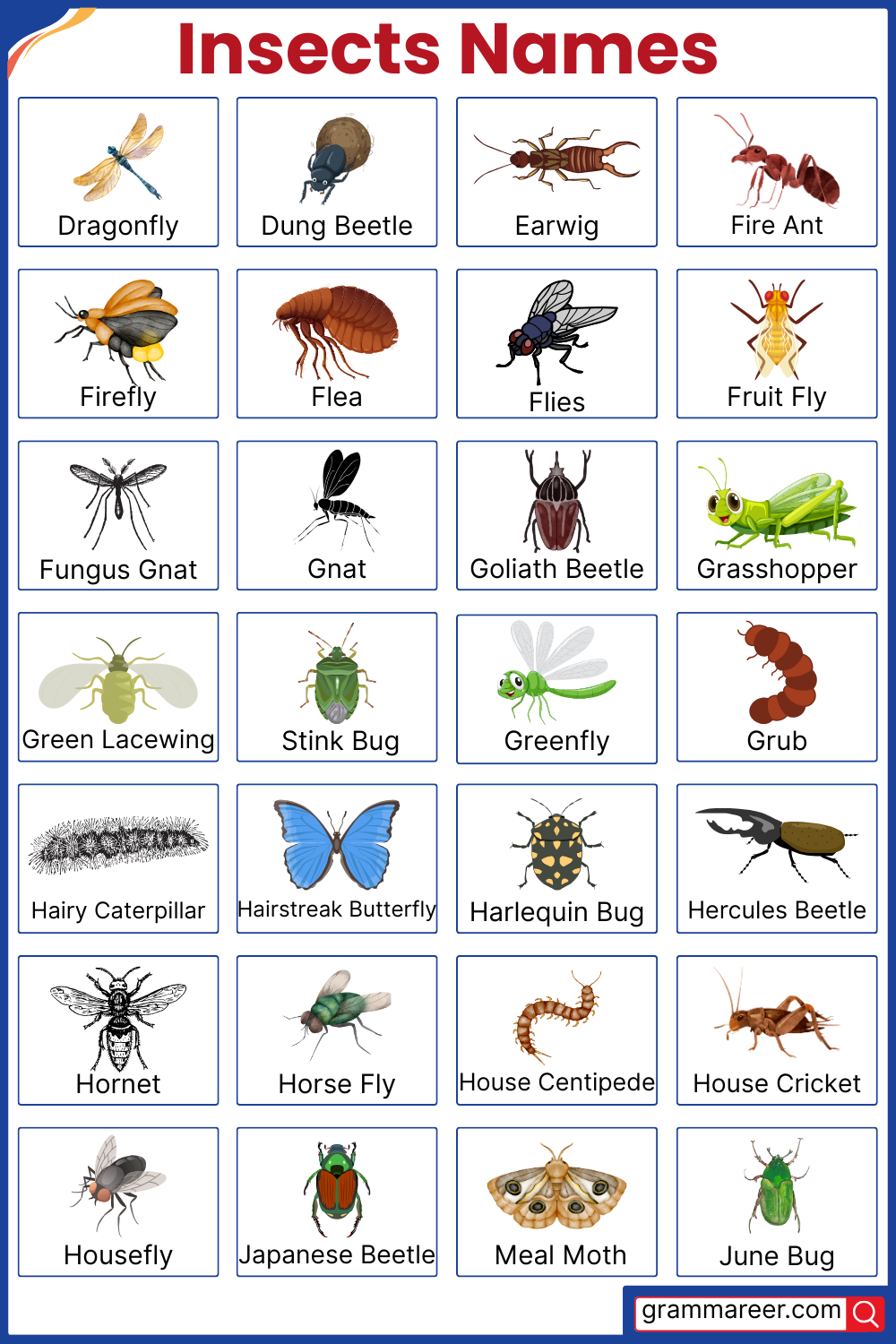
Household Insects Names
Many insects live indoors or near people. These insects are often seen crawling in kitchens, storage areas, and basements.
- Cockroach
- Housefly
- Ant
- Mosquito
- Silverfish
- Fruit fly
- Bedbug
- Carpet beetle
- Moth
- Termite
- Earwig
- Booklouse
- Spider beetle
- Pantry moth
- Flea
- Clothes moth
- Drain fly
Tropical and Forest Insects Names
In warmer or forested places, you can find a wide range of colorful and unusual insects. These are just a few examples.
- Stick insect
- Leaf insect
- Atlas moth
- Giant cicada
- Lanternfly
- Bullet ant
- Hercules beetle
- Goliath beetle
- Leafcutter ant
- Treehopper
- Assassin bug
- Orchid mantis
- Tiger beetle
- Rainforest butterfly
- Army ant
- Stag beetle
Indoor and Pet Insects Names
Some insects are found inside homes and can even be kept as pets by insect lovers or kids.
- Stick insect
- Ant (ant farms)
- Ladybug
- Praying mantis
- Butterfly (in enclosures)
- Silkworm
- Beetles
- Cricket
- Firefly (in jars)
- Cockroach (as pet or study insect)
- Leaf insect
- Grasshopper
- Katydid
- Giant millipede
- Vinegaroon
Green Insects Names
Many insects have green bodies that help them blend into plants. Below are green insects names that are often found in gardens or on leaves.
- Grasshopper
- Katydid
- Leaf insect
- Green stink bug
- Green lacewing
- Cucumber beetle
- Green beetle
- Treehopper
- Aphid
- Green shield bug
- Looper caterpillar
- Green leaf weevil
- Emerald ash borer
- Green leafhopper
- Green rose chafer
- Dogbane beetle
- Green mantis
- Green June beetle
Types of Insects Names for Kids with Pictures
Some insects are easier for kids to learn because of their color, size, or name. These are fun to spot and simple to remember.
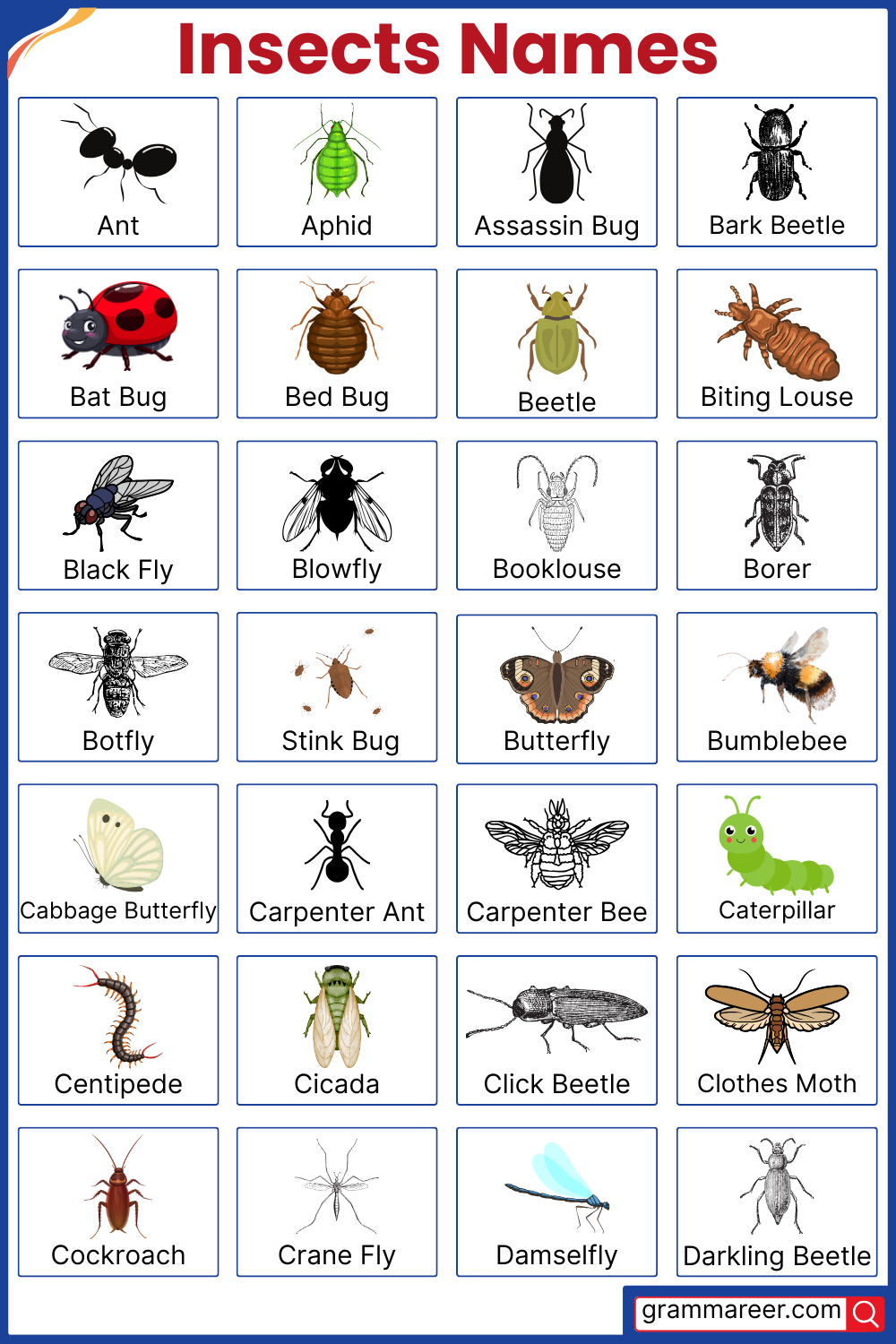
Easy Insects Names with Example Sentences
- The bee makes honey.
- An ant carries food to its nest.
- The butterfly lands on flowers.
- A fly sits on the wall.
- The ladybug has red wings with spots.
- The spider spins a web.
- A grasshopper jumps in the garden.
- The cricket chirps at night.
- A mosquito bites during summer.
- The moth flies near lights.
Cute and Colorful Insects Names for Children
- Ladybug
- Butterfly
- Firefly
- Bumblebee
- Dragonfly
- Moth
- Grasshopper
- Leaf insect
- Stick insect
- Jewel beetle
- Green lacewing
- Longhorn beetle
- Rosy maple moth
Flying and Crawling Insects Names
Some insects fly in the air, while others move by crawling on the ground or walls. You’ll notice the difference in how they move and live.
Flying Insects
Butterfly
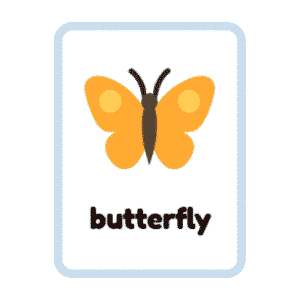
Bee
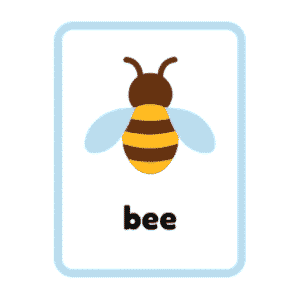
Fly
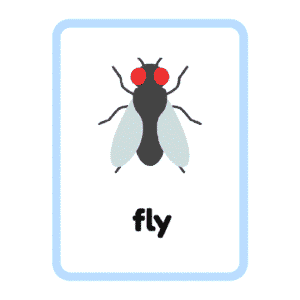
Hornet
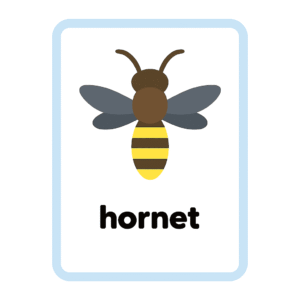
Gnat
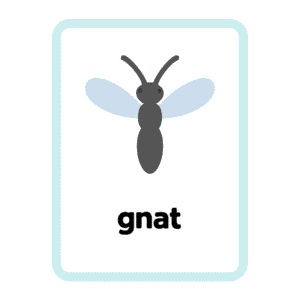
Cicada
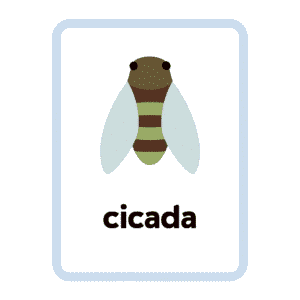
Bumblebee
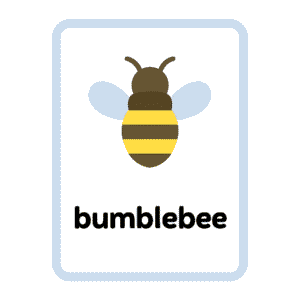
Dragonfly
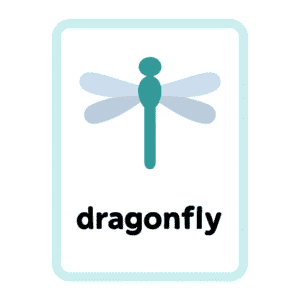
Moth
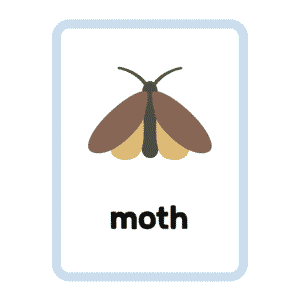
Crawling Insects
- Ant
- Beetle
- Cockroach
- Termite
- Silverfish
- Bedbug
- Centipede
- Millipede
- Louse
- Flea
- Spider beetle
- Firebrat
- Booklouse
- Caterpillar
- Tick
- Earwig
Types of Scientific Insects Names
This section helps match insects names with their scientific names, useful in biology and school science.
| Common Name | Scientific Name |
|---|---|
| Housefly | Musca domestica |
| Mosquito | Culex pipiens |
| Ant | Formica spp. |
| Bee | Apis mellifera |
| Butterfly | Danaus plexippus |
| Cockroach | Periplaneta americana |
| Moth | Manduca sexta |
| Dragonfly | Anax junius |
| Beetle | Coleoptera (order) |
| Termite | Isoptera (order) |
| Firefly | Lampyridae (family) |
| Wasp | Vespula vulgaris |
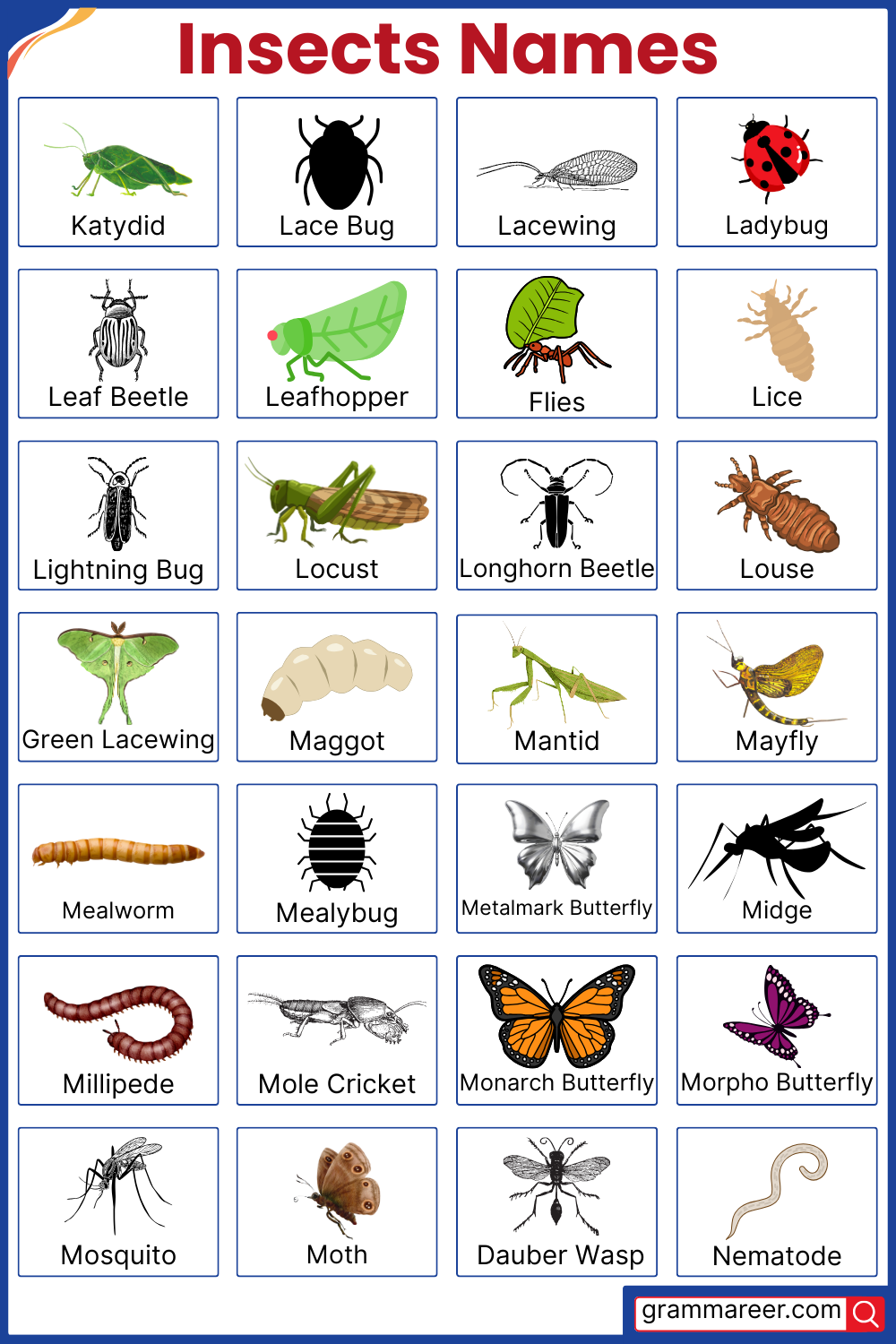
Insects That Sting or Bite
Some insects protect themselves by stinging or biting. Below is a list of such insects to be aware of.
- Wasp
- Bee
- Hornet
- Mosquito
- Horsefly
- Fire ant
- Bullet ant
- Bedbug
- Flea
- Tick
- Assassin bug
- Biting midge
- Kissing bug
- Blackfly
- Yellowjacket
- No-see-um
Insects That Spread Diseases
These insects may carry or spread diseases and affect humans, pets, or crops.
- Mosquito: Mosquitoes spread diseases like malaria, dengue, and Zika through bites. They are dangerous in warm climates.
- Flea: Fleas carry bacteria that cause plague and typhus. They spread disease by biting humans and animals.
- Tick: Ticks attach to skin and feed on blood. They spread diseases like Lyme disease and Rocky Mountain fever.
- Housefly: Houseflies carry bacteria from garbage and waste. They spread illnesses such as food poisoning and diarrhea.
- Cockroach: Cockroaches carry bacteria and germs. They spread diseases like salmonella and asthma triggers through contamination.
- Tsetse fly: Tsetse flies spread sleeping sickness. They bite humans and animals, transferring harmful parasites through saliva.
- Louse: Lice live on hair and skin. They spread typhus and cause itching through bites and direct contact.
- Sandfly: Sandflies spread leishmaniasis. They bite humans and animals, passing parasites that affect skin and internal organs.
- Blackfly: Blackflies cause river blindness. Their bites transfer parasites that can cause severe vision loss over time.
- Kissing bug: Kissing bugs spread Chagas disease. They bite near lips and eyes, passing parasites in feces.
- Assassin bug: Assassin bugs carry parasites that cause Chagas disease. They bite humans, often during nighttime hours.
- Stable fly: Stable flies bite animals and humans. They spread diseases such as anthrax and bacterial infections.
- Botfly: Botflies lay eggs under skin. Their larvae cause painful swellings and can infect humans and animals.
Insects Names with Their Food and Habitat
Insects live in many environments and eat many types of food. This helps them survive and spread in nature and human spaces.
What Insects Eat
- Nectar: Many insects like bees and butterflies feed on nectar for energy. It also helps in plant pollination.
- Leaves: Caterpillars and beetles chew on plant leaves as their main food during growth.
- Blood: Mosquitoes and some flies feed on blood from animals or humans for survival and reproduction.
- Dead animals: Insects like blowflies and carrion beetles eat rotting meat and help clean up waste.
- Food crumbs: Ants and cockroaches are often found eating leftover crumbs inside homes or outdoors.
- Grains: Grain beetles and weevils attack stored rice, wheat, and corn inside bags or silos.
- Wood: Termites and some beetles eat wood from trees or furniture, often causing serious damage.
- Sap: Aphids and cicadas drink plant sap using special mouthparts designed to pierce stems.
- Plant stems: Some bugs like stem borers feed inside plant stems, weakening the plant over time.
- Fungi: Fungus gnats and other insects rely on growing fungi for food, especially in moist places.
- Other insects: Predatory bugs like praying mantises and dragonflies eat smaller insects to survive.
- Fruit: Fruit flies and some beetles enjoy feeding on ripe or decaying fruit juices and flesh.
- Human skin: Lice and some mites feed on skin flakes or suck fluids from human skin.
- Animal waste: Dung beetles roll and eat animal feces, which also helps return nutrients to the soil.
- Flower pollen: Bees and beetles collect pollen as a source of protein for themselves and their young.
Where Insects Live
- Soil: Many insects like ants and beetles dig into soil to build tunnels, hide, or lay eggs.
- Grass: Crickets and grasshoppers hide in grass for food and shelter from predators.
- Tree bark: Insects such as bark beetles and spiders live under bark for warmth and safety.
- Inside walls: Termites and roaches hide in wall cracks, nesting away from light and humans.
- Kitchens: Ants, cockroaches, and flies often gather in kitchens where food and water are nearby.
- Wet places: Mosquitoes and gnats prefer damp spots like drains, sinks, or puddles to lay eggs.
- Plants: Aphids, caterpillars, and bugs live on plants, feeding on leaves, stems, or sap.
- Under leaves: Small insects such as leafhoppers hide under leaves to stay cool and avoid being eaten.
- Water edges: Dragonflies and water bugs live near ponds or streams to hunt and breed.
- Garbage bins: Flies and roaches swarm around trash where leftover food and moisture are common.
- Bedrooms: Bed bugs hide in mattress seams, bed frames, or behind furniture during the day.
- Barns: Barns offer warmth and food, attracting flies, mites, and beetles to live and breed.
- Fruits: Fruit flies lay eggs in ripe or rotting fruits, which become homes for their larvae.
- Sand: Certain insects like sand fleas and beetles burrow into sandy soil to stay hidden.
- Wood piles: Termites and carpenter ants live in stacked wood, feeding and nesting in the damp.
- Crawl spaces: Spiders, roaches, and silverfish hide in dark, quiet crawl spaces for protection.
Insects Found on Trees and Plants
- Leafhopper
- Aphid
- Mealybug
- Scale insect
- Treehopper
- Gall wasp
- Caterpillar
- Beetle larvae
- Webworm
- Ant
- Stink bug
- Green stink bug
- Leaf beetle
- Bark beetle
- Twig girdler
- Cicada
- Whitefly
- Thrips
Infographic: Insects Names List
This section includes a visual summary of insects names to help you learn faster. Each picture comes with a label to match the name.
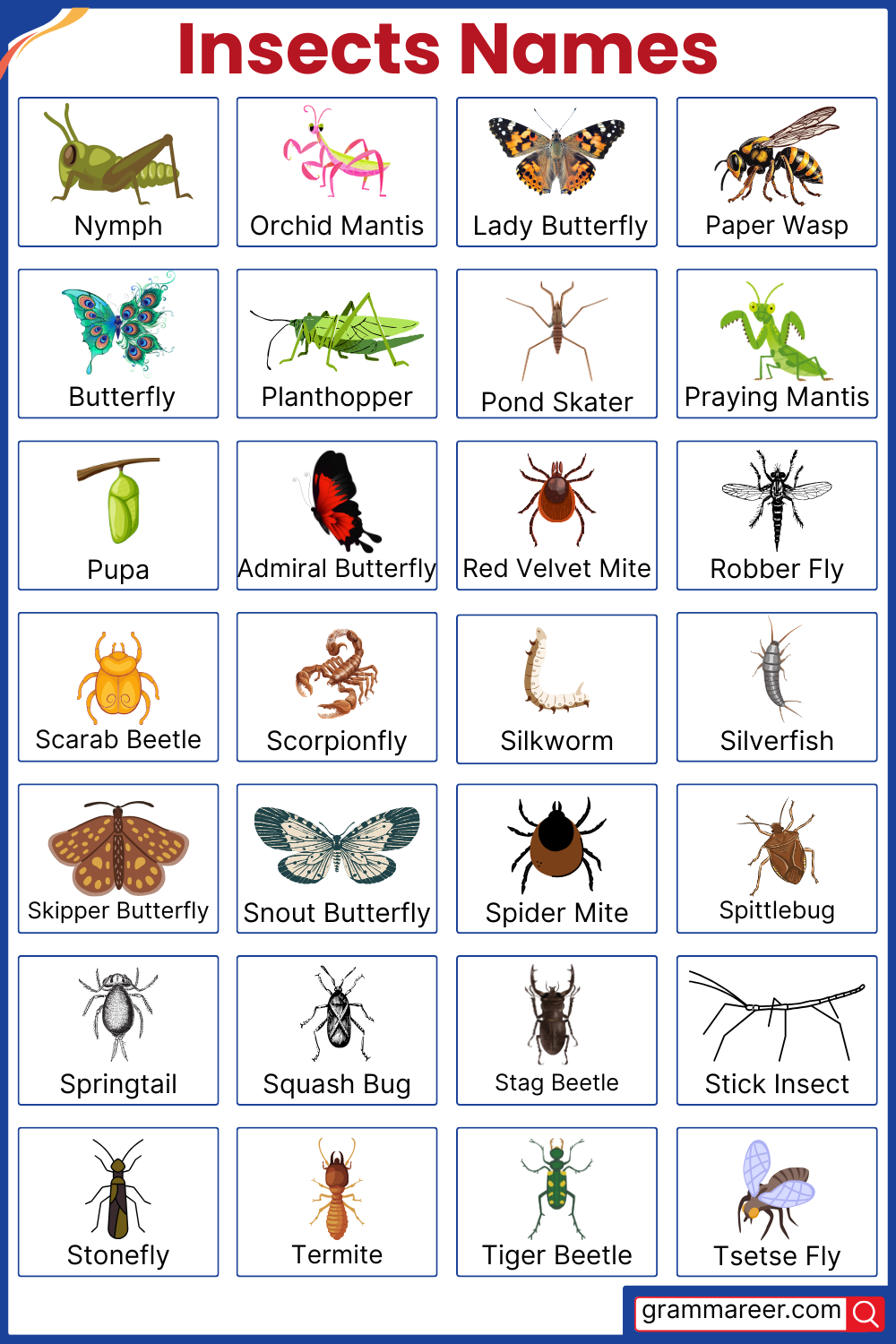
Another Name for Common Insects
Some insects have more than one name, depending on local speech or casual terms.
- Firefly = Lightning bug
- Ladybug = Ladybird
- Mosquito = Skeeter
- Praying mantis = Mantis
- Cicada = Harvest fly
- Wasp = Yellowjacket (in some types)
- Gnat = No-see-um (small biting fly)
FAQs about Insects
Common insect names include ant, bee, butterfly, cockroach, mosquito, fly, dragonfly, ladybug, grasshopper, and moth.
Ten of the strongest insects include the dung beetle, ant, rhinoceros beetle, titan beetle, weevil, Japanese hornet, giant water bug, termite, army ant, and ladybug.
Some of the smallest insects include the fairyfly, parasitic wasp, ant, midge, flea, and booklice. These insects are often just a few millimeters in size, making them nearly invisible to the naked eye.
Twenty common insect names include ant, bee, butterfly, cockroach, mosquito, fly, dragonfly, ladybug, grasshopper, moth, termite, wasp, beetle, cricket, flycatcher, fruit fly, firefly, caterpillar, roly-poly, and aphid.
You May Also Like

